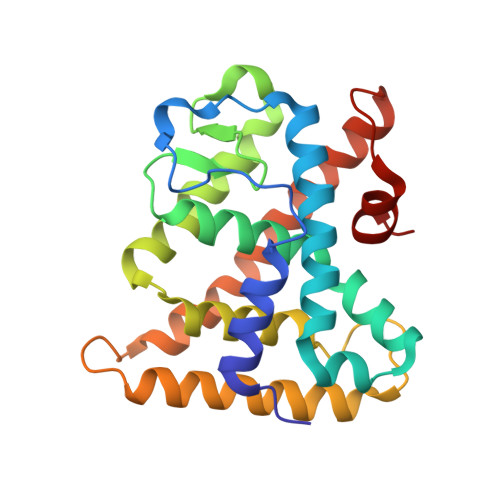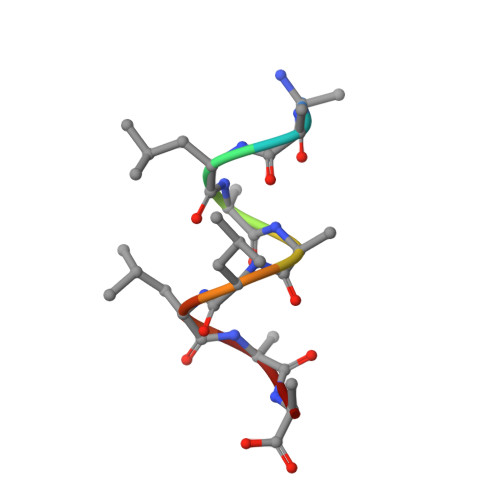Multiple binding modes between HNF4alpha and the LXXLL motifs of PGC-1alpha lead to full activation
Rha, G.B., Wu, G., Shoelson, S.E., Chi, Y.I.(2009) J Biol Chem 284: 35165-35176
- PubMed: 19846556
- DOI: https://doi.org/10.1074/jbc.M109.052506
- Primary Citation of Related Structures:
3FS1 - PubMed Abstract:
Hepatocyte nuclear factor 4alpha (HNF4alpha) is a novel nuclear receptor that participates in a hierarchical network of transcription factors regulating the development and physiology of such vital organs as the liver, pancreas, and kidney. Among the various transcriptional coregulators with which HNF4alpha interacts, peroxisome proliferation-activated receptor gamma (PPARgamma) coactivator 1alpha (PGC-1alpha) represents a novel coactivator whose activation is unusually robust and whose binding mode appears to be distinct from that of canonical coactivators such as NCoA/SRC/p160 family members. To elucidate the potentially unique molecular mechanism of PGC-1alpha recruitment, we have determined the crystal structure of HNF4alpha in complex with a fragment of PGC-1alpha containing all three of its LXXLL motifs. Despite the presence of all three LXXLL motifs available for interactions, only one is bound at the canonical binding site, with no additional contacts observed between the two proteins. However, a close inspection of the electron density map indicates that the bound LXXLL motif is not a selected one but an averaged structure of more than one LXXLL motif. Further biochemical and functional studies show that the individual LXXLL motifs can bind but drive only minimal transactivation. Only when more than one LXXLL motif is involved can significant transcriptional activity be measured, and full activation requires all three LXXLL motifs. These findings led us to propose a model wherein each LXXLL motif has an additive effect, and the multiple binding modes by HNF4alpha toward the LXXLL motifs of PGC-1alpha could account for the apparent robust activation by providing a flexible mechanism for combinatorial recruitment of additional coactivators and mediators.
Organizational Affiliation:
Department of Molecular and Cellular Biochemistry, Center for Structural Biology, University of Kentucky, Lexington, Kentucky 40536, USA.
















